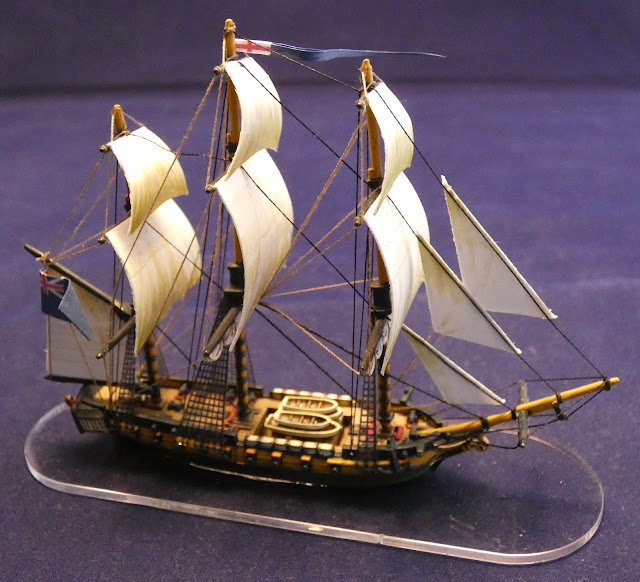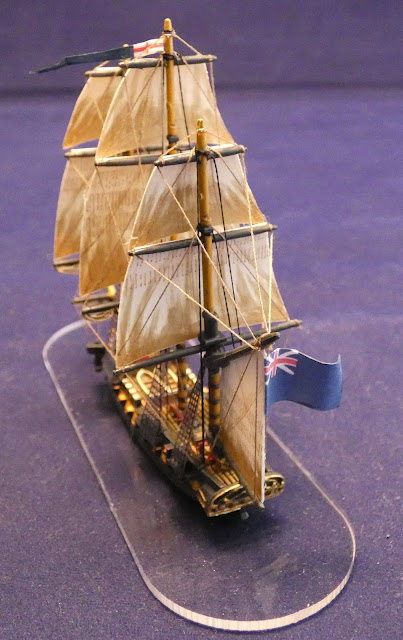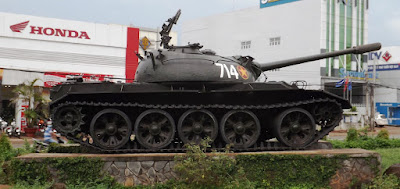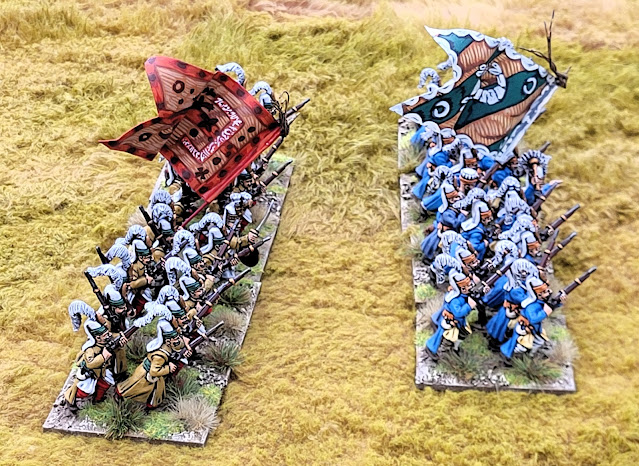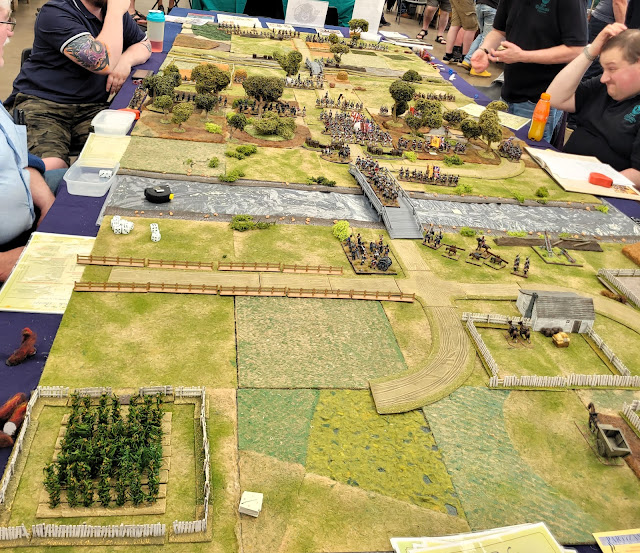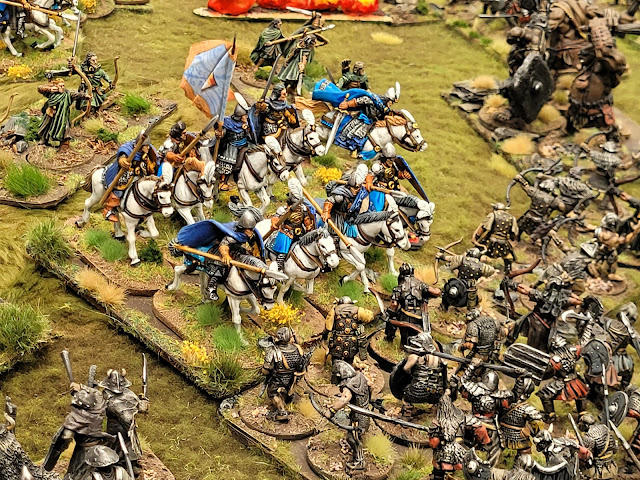Having completed both battlelines for the respective British and Batavian Dutch fleets my work now progresses to adding the remaining small ships that made up the full compliment of both forces which adds to the initial builds I did back in July 2021 with my two frigates and a brig constructed for my Small Ship Scenarios, link below.
 |
| JJ's Wargames - All at Sea - Revolutionary War Batavian Dutch Frigates & Brig |
Hence the few additions to my planner guide already indicates some of these small ships are done, but still leaving a little bit more work to do, that said I do intend to change a few of the models with more appropriate options, so this part of the build is likely to be a bit of a moving feast, plus I have some scratch building to do as well.
 |
| The state of play with the project prior to the addition of my four new models illustrated below, namely Beaulieu and Circe for the British and Minerva and Waakzaamheid for the Batavian-Dutch |
I know some folks aren't that bothered about including these smaller vessels to their big-battle line ups but to me they are an important representation of the two fleets which, if the rules used to model the battle well will enable their key roles to be represented, which I think that not only adds to the look of the game but recreates the important aspect of battle management that would be lacking somewhat in their exclusion.
Hence I intend to have them represented on the table to play a part as required in signal relay, management of prizes and in the case of the Batavian Dutch actually engaging enemy ships of the line, which saw some acting rather boldly as a second line of battle as instructed by Admiral de Winter, paying a high price for their temerity,
So to start things off I would like to showcase two British frigates, Beaulieu and Circe, and two Batavian-Dutch corvettes, Minerva and Waakzaamheid.
 |
| From left to right, Minerva, Waakzaamheid, Circe and Beaulieu |
Beaulieu
HMS Beaulieu pronounced 'Bewlee' (named after the manorial family home of the Montagu's in the New Forest in Hampshire and close by to Buckler's Hard where she was built), was a 40-gun fifth-rate frigate of the Royal Navy laid down in 1790 as a speculative build by the shipwright Henry Adams and purchased by the Royal Navy in June of the same year.
Built at Adams' Buckler's Hard shipyard in Hampshire during the peace between the American Revolutionary War and French Revolutionary War to the dimensions of a merchant ship, Beaulieu did not have good sailing qualities.
She was the only 18-pounder frigate procured by the Royal Navy during this period and would continue to be a rarity being one of only eight serving British frigates to have thirty-eight or more guns in 1793.
Her general characteristics were:
Tons burthen 1,019 79⁄94 tons (bm)
Length of gundeck 143 feet, 3 inches
Beam 39 feet, 6 inches
Depth of hold 15 feet, 3 inches
Her armament consisted of:
Gundeck: 28 x 18-pounder long guns
Quarterdeck & Forecastle: 8 (QD) & 4 (Fc) x 9-pounders long guns.
The frigate also took part in the initial stages of the invasion of Guadeloupe, but later that year the ship's crew was beset by yellow fever and much depleted, and she was sent to serve on the North America Station to allow them to recuperate, returning to the Leeward Islands in 1795.
Beaulieu then fought at the Battle of Camperdown under Captain Francis Fayerman in October, unsuccessfully chasing the escaping Dutch ship of the line Brutus after the battle.
The Beaulieu's log of the battle serves well to illustrate the mix of duties for a light ship like her during a major fleet battle and makes interesting reading as it records her monitoring the movements of the enemy fleet and signalling accordingly to the flagship, before taking her station for battle, later taking possession of an enemy frigate, sending her surgeon's mate to help the beleaguered surgeon of HMS Ardent, before joining HMS Endymion in pursuit of Dutch ships attempting to escape back to the Texel.
BEAULIEU
Log. JOHN OSMAN, Master. Official No. 2395.
[Extracts from the Beaulieu's log from the time she sighted the Dutch fleet are here given. The full log begins at midnight on the l0th of October.]
Sunday, October 8th
12.30 A.M. Saw a strong fleet in the NE quarter. Spoke the Russell. At daylight the body of the enemy's fleet east 2 or 3 miles.
6 P.M. Enemy's fleet from NE to E by N.
Monday, October 9th
6 A.M. - Body of enemy's fleet NE 1\2 E.
9 P.M. - Body of enemy's fleet S by E 2 miles.
Tuesday, 10th.
Noon. Enemy's fleet S by E 5 or 6 miles.
P.M. At 12, light breezes and clear. Enemy's fleet SE by S 3 miles.
October 11th.
A.M. At 4, fresh breezes and clear. 1/4 past 7, tacked ship. At 8, the ships to windward made the signal for a fleet to windward. At 1/4 past 8, made the signal for the enemy's fleet in sight. At 9, joined company Admiral Duncan and the fleet under his command. In 2nd reef topsails. Set topgallant sails and foresail. In topgallant sails. Camperdown ESE 4 or 5 leagues.
 |
| A representation of the British and Batavian Dutch fleets five minutes before action commenced on the 11th October - Unknown Artist |
P.M. Moderate breezes and squally weather with rain at times. 46 past noon, the rear of the fleet
began the action. 47 past noon, Admiral Duncan commenced firing. At 1, observed a Dutch frigate to leeward, bore up for her and made sail. 28 minutes past 1, the Dutch Admiral struck. 30 minutes past 1, the Dutch frigate struck. Proved the Monnikendam.* Hove to and out boats. Sent 36 men and a lieutenant to take possession of her. Received on board 80 prisoners in boats and made sail for the fleet. 3 minutes past 3, the fleets ceased firing. 1\2 past 9, spoke the Ardent. Lowered down the jolly-boat, and sent the surgeon's mate on board her at 10 in jolly-boat.
*. . . the Monnikendam took a more important part in the action than usually falls to the lot of a frigate. Among other exploits it is stated that her fire caused the Russell to desist from her attack on the Delft. The Russell does not seem to have observed this
October 12th.
A.M. - Light breezes and hazy weather. At 4, moderate breezes and squally weather. At 6, spoke the Monarch. Out 3rd reef of the topsails, 3/4 past 7, bore up and spoke Admiral Duncan. Fresh breezes and squally weather. At 11, tacked ship.
P.M. - 1\2 past noon, tacked ship. At 1, up courses, down jib and hove to. 1\4 past 1, lowered down the
jolly-boat and the captain went on board the Monarch. 1\2 past 3, up jolly-boat. Wore ship. Set the foresail and topgallant sails. 1\2 past 8, wore ship and up foresail.
1/2 past 9, spoke H.M. ship Endymion, who informed us she had been in action with the enemy and wished us to keep her company till morning, in hopes of falling in with the enemy again. Answered in the affirmative. 1\2 past 12, backed the main topsail.
Circe
HMS Circe (named of the Greek goddess of magic, a sorceress, she was the daughter of Helios the sun god and of the ocean nymph Perse), was a 28-gun Enterprise-class sixth-rate frigate of the Royal Navy and was launched in 1785 but not completed or commissioned until 1790. |
| A model of HMS Enterprise, sister ship to Circe, shown wearing the command flag of a Vice-Admiral of the White |
First commissioned in September 1790 under the command of Captain George Oakes, she was paid off in October 1791, and Captain A. H. Gardiner commissioned her in April 1792.
Her general characteristics were:
Tons burthen 599 55⁄94 tons (bm)
Length of gundeck 120 feet, 6 inches
Beam 33 feet, 8 inches
Depth of hold 11 feet
Her armament consisted of:
Gundeck: 24 x 9-pounder long guns
Quarterdeck & Forecastle: 4 x 6-pounder long guns (QD) & 2 (Fc) x 18-pounder carronades.
Promoted to post-captain on 4 February 1793 Joseph Sydney Yorke was given command of Circe, then part of a squadron under Admiral Richard Howe, and patrolled off the French port of Brest, taking the French ships Diane, Vaudreuil and Jeune Felix in March, and sharing the prize money for Diane and Vaudreuil with HMS Druid. On the 18th March Circe captured the Danish brig Pelican.
Later in May Circe took the French privateers Didon (or Dido) and Auguste, the former armed with 14 guns and with a crew of 100 men, the latter armed with 18 and a crew of 160. Lastly, Circe captured the privateer Coureur (or Courier), of 10 guns and 84 men, sharing with HMS Aimable in the prize money for Courier, which they had captured on the 26th of May.
With Nymphe, Circe captured the corvette L'Espiegle on the 20th of November, armed with 16 guns, and manned with 100 men under the command of Mons. Pierre Biller, Enseign de Vaisseau. that would see the Espiegle taken into Royal Navy service under her existing name.
 |
| HMS Crescent, under the command of Captain James Saumarez, capturing the French frigate Réunion off Cherbourg, 20th October 1793 - Thomas Whitcombe |
Circe played a minor, supporting role at the action of 20th October 1793 and consequently shared with HMS Crescent in the prize money for Réunion. At some point Circe and HMS Phaeton recaptured the brig Venus and sloop Ant, "laden with Butter". On the 24th of May 1794, Circe recaptured the brig Perseverance, while in company with the rest of the squadron under the command of Rear-Admiral Montagu.
In October 1794 Captain Peter Halkett took command of Circe.
.png) |
| Sir Peter Halkett, seen here as an admiral in 1830 took command of Circe in October 1794. |
In May 1797, due to the exertions of her officers, Circe's crew did not join the Spithead and Nore mutinies, and Halkett received orders to put out to sea, which he did, leaving Yarmouth and sailing, together with some hired armed vessels to protect merchant trade. He continued to cruise until his supplies were almost exhausted and then he sailed Circe into the Humber, waiting at Hull until the mutiny was over.
Halkett received the "thanks of the Admiralty and the freedom of the town of Hull for the conduct of his ship during the alarming period." On the 23rd of August 1795, Circe captured the Swedish corn vessel, Auguste Adolphe, in the North Sea.
In October 1797 Circe was part of the squadron under Sir Henry Trollope that was at the Texel to watch the Dutch fleet, and on the 11th of October Circe served to repeat signals for the Starboard or Weather Division under Admiral Adam Duncan at the Battle of Camperdown, and I have included her log of the events that day and the 12th that show her activities in more detail.
Log. ROBERT DAVISON, Master. Official No. 2489.
October 11th.
A.M. - At 12, moderate and cloudy. Enemy's fleet S by E 5 miles. Squadron in company. At 7, answered our signal to look out NE. Made sail, 3/4 past 7, saw a fleet ahead. The Russell made the signal for a strange fleet. At 8, observed the fleet to be English. Fired a gun. Made the signal to them for an enemy in sight bearing S by W. Hoisted a weft at the fore topgallant masthead to speak the Admiral 40 minutes past 8, we made the signal the enemy's fleet were 16 ships of the line.
Venerable made our signal to pass within hail. Tacked ship and spoke her. The Admiral ordered us to hail the Russell, and order her to lead in battle and the Adamant astern of her *, and the Beaulieu to fall in where an opportunity offered.
*The Russell and Adamant had probably not received the order of battle given out on October 7th.
Spoke them and gave them the orders. Then we bore up and joined the Admiral. Cleared ship for action. The enemy's fleet ahead lying to in a line of battle. Squally and showers of rain. Egmond SSE 9 miles.
P.M. - Fresh breezes and squally weather with rain. The enemy's fleet lying to in a line of battle to leeward. At 5 minutes past 12, the Vice-Admiral and several other ships began the action upon the enemy's centre and broke through their line.
 |
| A representation of the British and Batavian Dutch fleets five minutes before action commenced on the 11th October - Unknown Artist |
At 45 minutes past one, we observed 4 of the enemy's ships had struck their colours. Bore up occasionally to close with the Admiral. 13 minutes past 2, observed one of the enemy's ships on fire and one more had lost her main mast. Land in sight, bearing ESE 4 or 5 miles. 1\2 past 3, the action ceased.
Bore up and spoke the Admiral and inquired if he had any commands for us. He ordered us to take the disabled ship in tow. Made sail for the Dutch Admiral's ship. Sent an officer on board and took possession of her and carried Admiral de Winter on board the Venerable. 1\2 past 7, got her in tow. Proved to be the Liberté (Vrijheid) of 74 guns, totally dismasted, her captain and 250 men killed and wounded. In taking her in tow lost a 4-inch hawser, 3 hatchets and a Union Jack, which were all left on board the prize. The Director sent a lieutenant and took charge of the prize. At 8, obliged to cut away the six-oared cutter with all her masts, sails and oars. Egmond ESE 4 or 5 miles.
At 11, saw 8 sail of the enemy's fleet SSW. 1\2 past 11, made the signal to the weathermost ships for seeing a superior force of the enemy, 3/4 past 11, the enemy wore, and hauled their wind. Took in the signal, it not being answered. At midnight, moderate and cloudy. Venerable's light NW by W. The prize in tow.
October 12th.
A.M. - At 1, a cutter hailed us, sent from the Admiral to know why there had been false fires burnt in the rear. At 3, the Montagu took us in tow. At 6, answered the signal to close. 1\2 past 7, wore ship to join the fleet. At 8, light breezes and clear weather. Fleet in company and prize in tow. 1\2 past 10, cast off the Montagu's hawser. At 11, wore ship. Prize in tow. At noon, cast off the prize, the Montagu took her in tow. Made sail to close with the Admiral. Fleet and prizes in company.
 |
| Engraving of a painting of HMS Sirius capturing the Dutch ships Furie and Waakzaamheid, 24 October 1798 - Thomas Whitcombe. |
The French Navy captured her in 1794 and renamed her Vigilance. She was part of a squadron that in 1794 captured or destroyed a large number of British merchant vessels on the Guinea coast.
The French returned her to the Dutch Batavian Republic, in 1795, and the Dutch Navy returned her name to Waakzaamheid.
The Waakzaamheid was in the second line of the Batavian-Dutch fleet at the Battle of Camperdown on the 11th October 1797 under the command of Kapitein ter Zee van Mierop.
'the 26 guns of the Waakzaamheid, a ship of 504 tons, were all, except two brass sixes, long Dutch eights: two of these also brass and, we believe, mounted in the bridle-ports. Even then, 24 ports, calculated for 8 or 9 pounder guns, appear to be a great many for a ship of 504 tons. It is true, that the Waakzaamheid had two ports of a side on a lower or birth-deck; but the official letter expressly states, that she mounted 24 guns on her main deck.'
Her general characteristics were:
Tons burthen 504 tons (bm)
Length of gundeck 114 feet, 6 inches
Beam 31 feet 7.5 inches
Depth of hold 10 feet 6 inches
Her armament consisted of:
Gundeck: 24 x 8-pounder long guns
Quarterdeck & Forecastle: 2 x 6-pounder long guns (Fc)
Minerva
Minerva (the Roman virgin goddess of warfare, among other attributes, more precisely strategy rather than the muscular aspects personified by Mars), was launched in 1787 at Veere for the navy of the Dutch Republic. |
| Dutch 6th Rate Minerva 1787 - 1802. HMS Braak in British service |
The Minerva was in the second line of the Batavian-Dutch fleet at the Battle of Camperdown on the 11th October 1797 under the command of Kapitein ter Zee Eilbrecht.
Daniel Bennet purchased her and she became the whaler Africaine or African or Africa, and made two whaling voyages. After 1805 she was still listed in Lloyd's Register for some years but there is no record of further whaling or other voyages.
 | |
|
Similarly this model is a 3D print from Turner Miniatures of the Dutch corvette Minerva and has been fitted out with masts, ratlines, boats and anchors from the Warlord Games frigate, slightly modified with enhanced plasticard channels and the addition of a figurehead from the spares box.
Her general characteristics were:
Tons burthen 613 tons (bm)
Length of gundeck 126 feet, 6.5 inches
Beam 38 feet 8.5 inches
Depth of hold 13 feet 10 inches
Her armament is not recorded at capture but likely consisted of:
Gundeck: 24 x 8-pounder long guns
Quarterdeck & Forecastle: 2 x 6-pounder long guns (Fc)
These two little corvettes will add to the look of my Batavian Dutch fleet and the detail on these prints are excellent, with the models printed and supplied by Only Games, link below.
The next posts in the series will look at the other outstanding small ships.
More anon
JJ



